Best Practices in Email Marketing to Fetch You Money
What will it profit you or your business if you acquire subscribers, send them emails and they don’t get to see the emails, let alone take the expected action required of them? If action is not taken, you don’t make money and before action can be taken, the mail must be delivered and opened. The sole mission of this article is to address the best practices in email marketing that will get your emails delivered to the subscribers’ inbox and get the subscribers to take the desired action.
If the desired action fails to happen, you don’t make money, in fact you lose money. Period! Why so? Because every subscriber you acquire costs you resources (time and money).
Ignoring these rules could result in emails that never get delivered or opened. You can have a large mailing lists but inactive, or sendouts that seem perfect on desktop but disorganized on mobile because you fail to apply the email marketing best practices.

13 Best practices in email marketing
Here are some tips to help you improve your email marketing so you can stop sending one-off emails and start developing a long-term email marketing plan that benefits your company.
1. Get permission

In accordance with the General Data Protection Regulation (GDPR) privacy act, you need express consent before sending someone an email. When someone specifically says “yes,” you have their express authorization to email them (by, for example, typing their email address into your website subscribe form).
It is a known practice of some businesses to buy cold lists and start sending out emails. Emails that could or might not be relevant to these recipients. This is a horrible option since, among other things, it violates the GDPR policy. Additionally, it harms the reputation of your company and lowers engagement.
2. Use double opt-in email sign-up
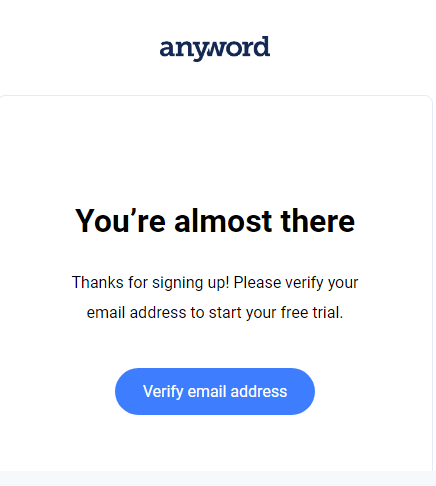
Visitors to your website, potential clients, or existing customers who sign up for your mailing list give you their consent to contact them.
As opposed to single opt-in, double opt-in email sign-up enables you to gather email addresses with additional confirmation step to make sure the person actually consents to receiving emails from you. By preventing false sign-ups, this technique also ensures that you are in compliance with GDPR and other anti-spam legislation.
With this, you get more quality emails sign ups and an email list that is likely to convert.
Here is an example of a double opt-in email sign-up in action.
- A sign-up form is completed by a website visitor on a landing page.
- They get a confirmation email after joining your mailing list.
- They are now a subscriber who has opted in to receive emails after confirming the confirmation in their email.
The ability to enable double opt-in email sign-up is offered by many email marketing platforms, including Mailerlite, to aid organizations in maintaining high-quality mailing lists. Building an engaged list and maintaining a high open rate with this email marketing best practice will help you generate revenue.
3. Send a welcome email
Send a welcome email to anyone who joins your email list to get things started. How nice of them to want to stay in touch with your company!
It is a good practice to send a welcome email to a customer who has opted in to receive emails to build a relationship and get them ready for what’s to come. Welcome emails are advantageous since they typically have an open rate of over 86% according to research. After a new subscriber joins your mailing list, the majority of email marketing providers allow you to send an automated welcome email. A welcome email should be timeless and relevant to newcomers.
In your welcome email
Introduce yourself and your business. An effective way to increase brand affinity for your business and connect emotionally with a subscriber is through a welcome email. Give a new reader some background information about you and the reasons you founded your business. Take them inside the process from conception to launch. Include unique details in the email, such as a team photo and a handwritten signature.
Send a curated list of your best content. If offering helpful advice and information is a component of your email marketing plan, new subscribers won’t have access to the extensive archive of your earlier content. Curate a few of your most well-liked articles or newsletters for your first email to a new subscriber.
Provide a discount or promotional offer. Businesses frequently provide a promotional discount, such as 10% off their first order, to entice website visitors to join their email mailing list. Use your welcome email to fulfill that promise in this situation by giving them a discount code and perhaps assembling a list of items they can splurge on. Alternately, utilize surprise to your advantage by offering unanticipated discounts to new subscribers to your email list.
4. Stick to consistent branding
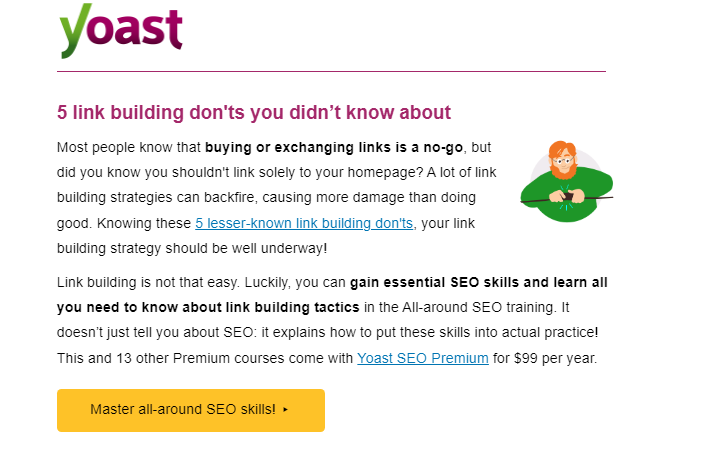
Make sure you constantly use your brand voice when communicating with your audience via email because it’s a very personal medium. Sending important information and amusing promotions via email from the same branded template can be highly confusing, so make an effort to assign specific colors, typefaces, and email signatories to each.
5. Make it easy to unsubscribe
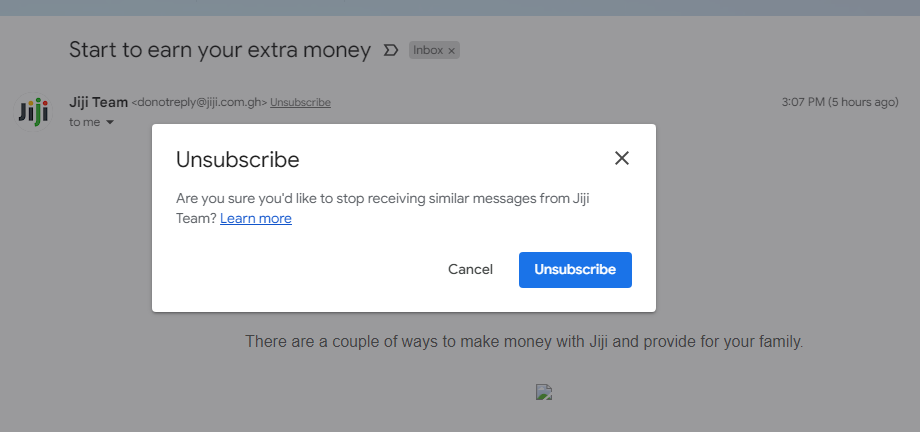
You could be tempted to hide and obscure your “unsubscribe” link since you don’t want people to unsubscribe from your emails. But refrain: Making it simple for users to unsubscribe is a smart email marketing move.
People will feel more secure if your unsubscribe option is prominently displayed. If they ever decide to leave, they can do so without any difficulty, which generally implies they won’t. Again, the CAN-SPAM statute makes it against the law to make it difficult to unsubscribe.
Make sure that your unsubscribe link is visible and that it is simple to use, requiring only one click. And don’t worry too much if people choose to stop receiving your emails; this doesn’t guarantee they won’t be back.
6. Keep emails brief
An individual sends and receives 121 business emails per day on average; the email you send to a subscriber is only one in an endless digital sea of emails. By keeping emails brief and to the point, you can increase the likelihood that they will be read.
The recommended length for email copy, according to “Campaign Monitor”, is between 50 and 125 words. This is only a suggested length; you should experiment to find the right length for the target market of your business. However, stay away from writing emails that are overly long and cause readers to abandon them midway through. Be direct and make the message you’re attempting to put across clear to the reader, whether it’s about a forthcoming special sale or the introduction of a new product line.
7. Focus on personalization
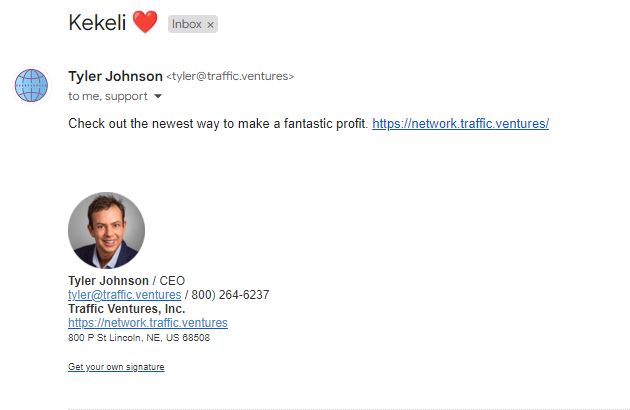
Just like other aspects of marketing, campaigns generally perform better when they are relevant and timely. Relevance starts with personalization. There are a ton of ways to personalize your emails, from inserting a first name (of the subscriber) to segmenting your audience. Very important.
When your customers and prospects sign-up to receive emails from you, it’s okay to ask what information they’d like to get out of the emails. Are they looking for sales alerts? Restock information? Newsletter updates? Take that information and place them into audiences for each specific strategy.
You hardly go wrong when you personalize what you send to your subscribers. Try it out!
8. Avoid spam at all cost
Hitting spam traps is one of the worst things that can ever happen to your email marketing. Your entire email program can be disabled if you fall victim to enough spam traps, which is bad. Your reputation will suffer, you won’t be able to send emails when you want to, and your email marketing service provider will have to fight to get your IP whitelisted once more. Avoid spam!
Among the best techniques for email marketing to prevent spam are;
- Always include an unsubscribe link that works.
- Make use of a legitimate postal address
- Let the subscribers do double confirmation
4. Make sure to include a permission reminder in your email (you are receiving this email because you subscribed HERE)
5. Be clear when choosing the “from” address (use the official name of your company)
6. Every email should contain a footer.
9. Perfect the subject line

It doesn’t matter how much effort or information you put in crafting an email if the subscriber doesn’t open the email. This is why it’s crucial to have a headline that stands out in a reader’s busy inbox. Avoid gimmicks like using ALL CAPS, using too many exclamation points, or using too many emojis-(don’t WRITE IN ALL CAPS, use lots of $$$, or too man !!!’s) and try these suggestions instead:
Stay original. Overusing words like “free” can decrease deliverability and cause readers to tune off.
Make it timely. Holidays or other upcoming occasions on the calendar might motivate action. If you offer accounting services, notify customers when tax day is approaching; if you sell custom decorations, inform customers when Christmas delivery will be completed.
Add a sense of urgency. Inform readers directly in the subject line if you are running a special pricing offer or if a discount is about to expire on your website.
Let readers know what’s ahead. Do not be afraid. Inform subscribers of what to expect when they open your email.
Keep it short. Your subject line is usually cut off after a certain number of characters in email clients (ESP). By keeping the subject line’s character count low, you can communicate more in fewer words.
Think like a copywriter. Even if an email subject line isn’t a magazine ad or billboard, consider drafting a line that grabs attention and creates curiosity about the email’s contents.
Consider a subject line that will encourage readers to click rather than open another email in their inbox.
10. Segment Your Email List
To make sure that each subscriber only receives emails that are relevant to them as your email list expands, segment your list (divide it up based on subscriber criteria). Your list can be divided in a few different ways.
For instance, if you conduct business globally, you might want to segment your subscribers based on geography. A consumer who has never purchased a product from your business before may require different communications than a regular customer, so you could also segment based on past purchases.
Your email marketing efforts will perform better if you employ segmented email campaigns since each subscriber will receive a message that is personalized for them.
There is evidence that segmented campaigns are more successful than non-segmented marketing, according to a short email research by Mailchimp that included 2,000 users that sent segmented emails:
Compared to non-segmented campaigns, openings were 14.31% higher.
Clicks were 100.95% more than in non-segmented campaigns.
Less subscribers than non-segmented campaigns by 9.37%
This procedure is easy to use and can be easily automated thanks to many email marketing tools. The finest content for segmentation is time and labor-intensive to produce. You may gradually refine and target your email messages as your company expands and your email marketing strategy expands.
Several possible methods for segmenting your email list are listed below:
Based on expressed content interests. During the sign-up process, a furniture business that sells things for kitchens, living rooms, dining rooms, and bedrooms can ask a website visitor what content they are interested in.
Based on website activity. You can send specific reminders and prompts based on when an email subscriber last visited your website or what they looked at while there.
Based on purchase history. Create client segments depending on the products they’ve purchased to enable you to send follow-ups for feedback or material specifically geared toward the product.
11. Put CTAs and important information above the fold
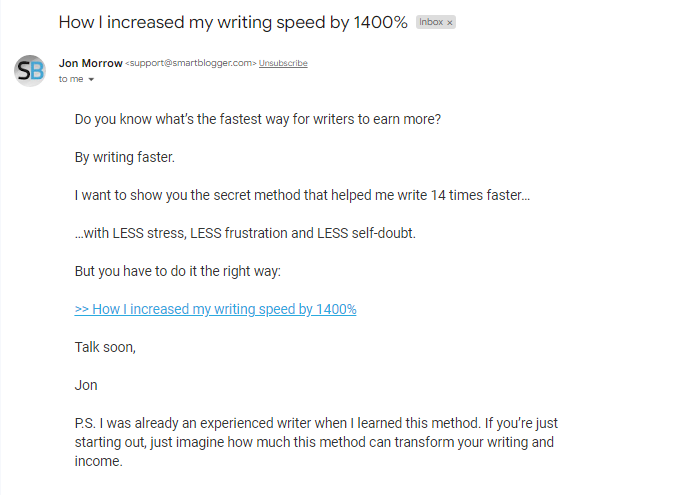
It’s a major deal. You must be direct in your emails if you want them to be effective, or to generate conversions. Since there are so many advertisements in their inboxes, why should they click on yours? Make sure to include a clear call-to-action (CTA) without making the reader scroll in the first section of the email where you discuss the key value proposition.
Make your CTA button stand out from the rest of the content by giving it a vivid color, a distinctive form, or perhaps some arrows pointing at it. Play around with the button’s wording as well; this is an excellent opportunity to be creative. Use phrases like “Start learning today” to let the reader picture exactly what will happen if they opt-in.
12. Test, test, test
As with any best practices for marketing, we can tell you what we *think* you ought to do, but only you have the authority to truly *know* what works. Take some ideas from these examples. Test everything. You can split test anything with email marketing: subject lines, headers, CTAs, designs, copy, segmentation, day of the week, time of day, etc.
The ability to test several versions of a single email and experiment with its content through A/B testing is a useful feature offered by the majority of email marketing platforms.
Here’s how A/B testing works:
- A portion of your mailing list (for example, 100 out of 1,000 subscribers) receives one version of your email (version A).
- Another portion of your email list (for example, 100 out of 1,000 subscribers) receives version B of your email.
- One of the two emails eventually “wins” based on performance measures like open rate, click-through rate, or another parameter you specify within your email marketing platform.
- The remainder of your email list (800 subscribers, for example) will then receive the email that was chosen as the winner. Either an automatic or manual process can be used.
You can compare several components of your email campaign using A/B testing to see which is most effective. The various components you can test with an A/B test are listed below:
- Headline
- Preview text
- CTA button
- Visuals
- Copy
Even while A/B testing can be a successful method, small businesses may not have the time or resources to devote to creating numerous emails. Test the basic elements of your emails, such as the headlines and preview text, first. As your email marketing strategy develops, think about testing additional email functions as well.
Also Read:
How To Get Started With Email Marketing & Make Money
Email Marketing Tools: The Top 7 Tools to Make You Money in 2022
Conclusion
You may engage with your subscribers and expand your business by concentrating on email best practices that convert subscribers into customers.
Email marketing is crucial, and if you put in the effort, it can be very rewarding. You’ll be well on your way to converting more customers through the power of email if you follow these email marketing best practices.



